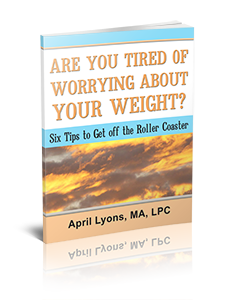Seasonal Affective Disorder (SAD) is a valid form of depression. However, because it affects sufferers in a cyclical or seasonal manner, it can be downplayed or written off as “the winter blues”.
While research hasn’t uncovered the exact causes of this type of depression, rest assured that if you’re wrestling with it, you aren’t alone.
Do know that the short, cold days, the long dark nights, and the ups and downs of winter holidays may all contribute to SAD. As the winter goes on, SAD may worsen. And now, as the added stress of the pandemic wears on, your depression may have reached a critical point.
Therefore, it’s vital to be aware, take action, and seek help.
Symptoms of Seasonal Affective Disorder
The symptoms of SAD aren’t much different than those of major depression. If you are dealing with this form of depression, you are likely experiencing feelings of sadness and/or “anhedonia” (a lack of interest in things previously enjoyed.)
Perhaps you are also having trouble functioning in one or more areas of your life? Additional symptoms include:
A shift in your eating habits. SAD sufferers often eat more and crave sugar and carbs during the winter months.
Sleep patterns are disrupted. Typically, SAD creates a desire to sleep more or longer.
Focus, concentration, and decisions are more difficult and frustrating
Fatigue and energy loss occurs
Speech patterns and physical movement slow down, despite a deep sense of restlessness
Persistent feelings of hopelessness and/or worthlessness arise
SAD sufferers experience these symptoms on most or all days for a period of two weeks or more. Their issues are seasonal, have happened at least twice in the previous couple of years, and go away completely during other seasons.
So, how do you find relief and joy during the winter months?
5 Everyday Strategies to Manage Seasonal Affective Disorder Depression
Light Is A Natural Antidote for SAD
In addition to traditional depression treatment, people with SAD often benefit from getting as much light as possible. The loss of natural sunlight in the wintertime is a likely contributor to a loss of Vitamin D. This results in low mood. Therefore, getting as much light as you can helps recovery.
Improve access to direct sunlight by adjusting your schedule if you need to. Wake up early and get outside daily to boost your energy. You may even want to invest in a light box (a box that emits a specific range of light).
1. Eat Your Vitamin D
The diminished sun exposure means that you likely need to boost mood-protecting vitamin D nutritionally too. You might use the extra time indoors to cook more dishes that include vitamin D-rich foods. Salmon, sardines, and egg yolks are a good place to start. Cod-liver oil is a good supplement too. Consult your doctor regarding intake.
2. Establish Productive Sleep Patterns
Appropriate sleep is paramount for a SAD sufferer. Sleeping too much is common and only exacerbates depression. Consider a dawn simulator alarm clock to help your mind and body set helpful patterns for waking and sleeping.
The pandemic may have also dismantled your daily routine of getting up and out for work. Recreate it in some fashion, even if you’re just getting up, dressed, and out for a walk. This helps counter the effects of all the hours indoors and increased screen time.
3. Move to Boost Your Mood
Winter is the time to increase movement and exercise, even though every fiber of your being may be imploring you to hibernate. Rather than perpetually curling up on the couch, get moving in a gentle but consistent way to start. Stretching, yoga, and walks can go a long way in releasing feel-good chemicals and endorphins. Work your way up to a bit of cardio or strength training when you’re ready.
4. Connect, Share, and Seek Out New People
Admittedly, this is harder during the winter and during a pandemic. But don’t give up on relationship-building. You need others despite what depression is telling you. Isolating only makes things worse. We’re wired for social contact and belonging.
If you safely can’t get together in person, that’s okay too. Your phone, tablet, and computer are great for a host of connection points. You can text, email, share photos, or video-conference. Even a simple voice call works. Try making a habit of letter and card writing to help you stay connected and give a goal to accomplish each day. Just make an effort to reach out and share authentically with people you trust.
5. Writing in a Journal Can Provide Perspective
Writing is another good way to check-in on your wants and needs. Taking time to note and reflect on emotional triggers can help you challenge unhelpful, intrusive thoughts. Also, try to be balanced as you write. Use the opportunity to jot down goals, progress, and points of gratitude.
Try Counseling for Seasonal Affective Disorder Depression
If your SAD symptoms are unmanageable on your own, seek depression treatment. Depression counseling can help you manage negative thoughts and cope with daily stressors. Let's get through the winter together. Please reach out for a free consultation.
Related posts on Depression Treatment


